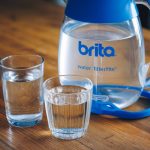Understanding PFAS Contamination in Water
Water is essential for life, but what if the water flowing from your tap contained invisible, harmful chemicals? Per- and polyfluoroalkyl substances (PFAS) are a growing concern in water contamination, and their impact on health and the environment cannot be ignored. But what exactly are PFAS, how do they end up in our water, and most importantly, how can you protect yourself?
What Are PFAS? The « Forever Chemicals »
PFAS, often called “forever chemicals,” refer to a large group of human-made chemicals that resist water, oil, and heat. Developed in the mid-20th century, PFAS have been widely used in manufacturing everyday products like non-stick cookware, stain-resistant fabrics, waterproof clothing, and even food packaging.
The problem? These chemicals don’t break down easily in the environment. Instead, they accumulate in soil, water sources, and even in our bodies over time. Studies suggest that prolonged exposure to PFAS can lead to serious health issues, including hormonal disruptions, weakened immune response, and even certain types of cancer.
How Do PFAS Contaminate Our Water?
PFAS enter water supplies through various means, but the primary sources include:
- Industrial discharge: Manufacturing facilities releasing PFAS-contaminated wastewater into rivers and lakes.
- Firefighting foams: Used in military bases and airports, these foams leach into groundwater over time.
- Landfills and wastewater treatment plants: Improper disposal of PFAS-containing products allows them to seep into nearby water sources.
Because PFAS are so stable, conventional water treatment methods don’t effectively remove them, meaning they can persist in municipal water supplies for years.
Health Risks Associated with PFAS Exposure
Scientific research has linked PFAS contamination to a range of health issues, and the most concerning effects include:
- Hormonal disruption: PFAS can interfere with endocrine functions, potentially leading to thyroid and reproductive issues.
- Weakened immune response: Studies suggest that high PFAS exposure may reduce the effectiveness of vaccines and make individuals more susceptible to infections.
- Increased cholesterol levels: Some PFAS compounds have been associated with elevated cholesterol, a major risk factor for heart disease.
- Higher risk of certain cancers: Long-term exposure has been linked to kidney and testicular cancer.
Although regulatory agencies are working to restrict PFAS production and contamination, these chemicals remain widespread in many water sources worldwide.
How Can You Check If Your Water Contains PFAS?
PFAS contamination isn’t something you can see, smell, or taste. Testing is the only way to know for sure. Here are a few steps you can take:
- Check local water reports: Many municipalities provide annual reports on water quality, including PFAS levels.
- Use home testing kits: Various lab-certified kits allow you to test your own water for PFAS contamination.
- Contact local authorities: If you suspect contamination, reach out to environmental agencies that monitor drinking water safety.
If tests confirm the presence of PFAS in your water supply, it’s time to explore filtration options.
Effective Ways to Remove PFAS from Your Water
Since conventional water treatment methods are often ineffective against PFAS, specialized filtration techniques are required. The most effective methods include:
- Activated carbon filters: High-quality granular activated carbon (GAC) filters can capture and reduce PFAS concentrations significantly.
- Reverse osmosis systems: These systems use semi-permeable membranes to filter out harmful contaminants, including PFAS.
- Ion exchange resins: This method replaces PFAS molecules with safer ions, reducing their presence in drinking water.
Before purchasing a filter, always check if it is certified for PFAS removal to ensure maximum protection.
Reducing PFAS Exposure in Daily Life
While filtering your drinking water is one of the most effective ways to reduce PFAS exposure, it’s not the only step you can take. Consider these additional precautions:
- Avoid non-stick cookware: Opt for stainless steel, cast iron, or ceramic cookware instead of Teflon-coated pans.
- Be mindful of fast food packaging: Some grease-resistant papers contain PFAS, so limit consumption of packaged fast foods.
- Choose PFAS-free personal care products: Check labels on cosmetics, waterproof mascaras, and sunscreen.
- Support PFAS regulations: Advocate for stronger policies to limit PFAS emissions and contamination.
The Future of PFAS Regulation
Regulatory agencies are gradually addressing PFAS contamination, but progress has been slow. Some laws have restricted certain PFAS compounds, yet thousands of variations of these chemicals still exist and require further regulation.
In the U.S., the Environmental Protection Agency (EPA) has set advisory limits for PFAS in drinking water, but enforceable standards remain a work in progress. Meanwhile, some states have implemented stricter guidelines to protect residents.
Globally, awareness is growing, and countries are taking action to ban or limit PFAS production. However, until stricter regulations are in place, individuals must take personal steps to protect their health.
Taking Control of Your Water Quality
PFAS contamination poses a serious risk, but knowledge is power. By understanding where these chemicals come from, how they affect health, and what filtration methods work best, you can take proactive steps to safeguard yourself and your family.
Investing in a reliable water filtration system and making small lifestyle changes can go a long way in reducing PFAS exposure. After all, clean water is fundamental to good health—why settle for anything less?



